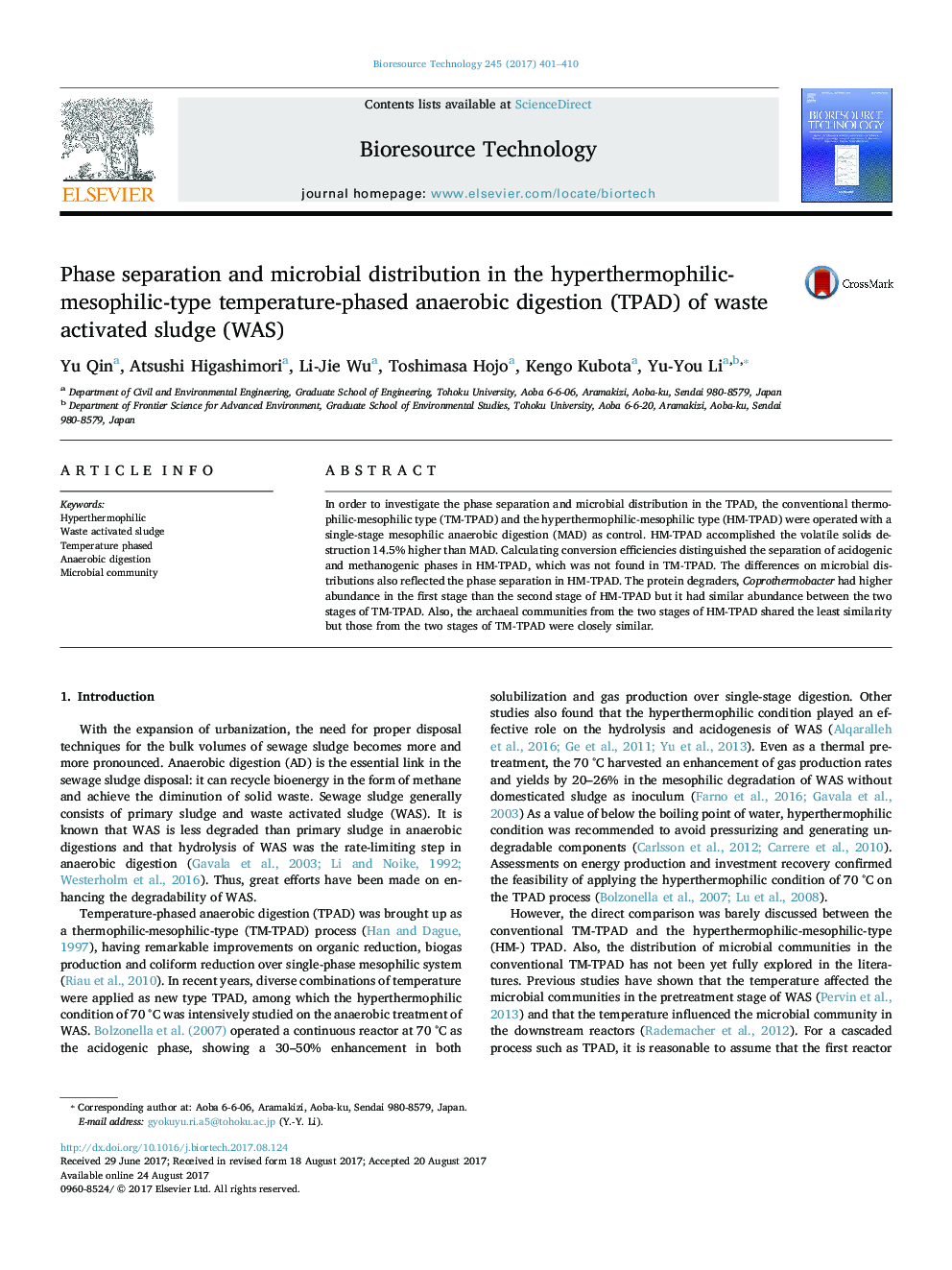| Article ID | Journal | Published Year | Pages | File Type |
|---|---|---|---|---|
| 4996774 | Bioresource Technology | 2017 | 10 Pages |
â¢The mechanism of the TPAD system changed with the temperature combinations.â¢VS removals were enhanced by 8% for TM-TPAD and by 14.5% for HM-TPAD.â¢The microbial structures in both stages of conventional TPAD were similar.â¢Distinct microbial communities were found between stages in the HM-TPAD.â¢Maintaining at 70 °C is an effective measure to achieve phase separation.
In order to investigate the phase separation and microbial distribution in the TPAD, the conventional thermophilic-mesophilic type (TM-TPAD) and the hyperthermophilic-mesophilic type (HM-TPAD) were operated with a single-stage mesophilic anaerobic digestion (MAD) as control. HM-TPAD accomplished the volatile solids destruction 14.5% higher than MAD. Calculating conversion efficiencies distinguished the separation of acidogenic and methanogenic phases in HM-TPAD, which was not found in TM-TPAD. The differences on microbial distributions also reflected the phase separation in HM-TPAD. The protein degraders, Coprothermobacter had higher abundance in the first stage than the second stage of HM-TPAD but it had similar abundance between the two stages of TM-TPAD. Also, the archaeal communities from the two stages of HM-TPAD shared the least similarity but those from the two stages of TM-TPAD were closely similar.
